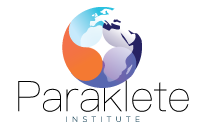Table of Contents
In project management, agile and Scrum methodologies have emerged as game-changers. Indeed, they have revolutionized the way teams work and projects are delivered.
Agile is a mindset, a way of thinking that promotes flexibility, collaboration, and customer satisfaction. It is about continuously adapting and responding to change, not following a plan.
On the other hand, Scrum is a framework that implements the agile philosophy. Specifically, it provides a set of practices and roles that guide teams in working agilely.
Together, agile and Scrum provide a powerful approach to project management. They enable teams to deliver high-quality products, adapt to changing requirements, and continuously improve their processes.
This article serves as an ultimate guide to understanding these methodologies.
Are you a project leader, a software engineer, a commercial analyst, or simply interested in agile and Scrum methodologies? If so, this guide will give you a complete comprehension of the Agile and Scrum methodologies.
Therefore, let’s embark on this journey to explore the principles, practices, and benefits of Agile and Scrum.
Understanding Agile Project Management
Agile project management is a modern approach to project management. It is particularly effective in environments where requirements are uncertain or likely to change.
Unlike traditional project management methodologies, Agile does not rely on a linear, sequential approach. Instead, it embraces an iterative and incremental process.
Consequently, his approach allows teams to deliver work in small, manageable chunks known as iterations or sprints. Moreover, each iteration provides an opportunity to reassess project priorities and adjust plans accordingly.
The Twelve Principles of Agile

Agile project management is underpinned by a set of 12 core principles outlined in the Agile Manifesto. Suppose you are renewing your interest in Agile or want to refresh your understanding of its foundation. In that case, you can delve deeper into these principles and their significance in our comprehensive guide, Agile Manifesto: A Guide for Beginners. These principles guide how teams work and interact, promoting a culture of collaboration, flexibility, and customer focus.
The 12 key principles of agile project management as laid out in the Agile Manifesto by the Agile Alliance include:
- Our highest priority is to satisfy the customer through the early and continuous delivery of valuable software.
- Welcome changing requirements, even late in development. Agile processes harness change to the customer’s competitive advantage.
- Deliver working software frequently, from a couple of weeks to a couple of months, with a preference for a shorter timescale.
- Business people and developers must work together daily throughout the project.
- Build projects around motivated individuals. Please give them the environment and support they need and trust them to do the job.
- Face-to-face conversation is the most efficient and effective method of conveying information to and within a development team.
- Working software is the primary measure of progress.
- Agile processes promote sustainable development. The sponsors, developers, and users should be able to maintain a constant pace indefinitely.
- Continuous attention to technical excellence and good design enhances agility.
- Simplicity–the art of maximizing the work not done–is essential.
- The best architectures, requirements, and designs emerge from self-organizing teams.
- The team regularly reflects on how to become more effective, then tunes and adjusts its behavior accordingly.
These principles emphasize customer satisfaction, flexibility, collaboration, and continuous improvement. They form the backbone of agile project management and guide teams in their agile journey.
The Agile Manifesto and Its Four Values

The Agile Manifesto is the cornerstone of agile project management. Interestingly, it was created in 2001 by a group of software developers. At this time, the idea arose from finding a better way to manage projects and deliver value.
The manifesto outlines four core values that underpin the agile philosophy:
- Individuals and interactions over processes and tools
- Working software over comprehensive documentation
- Customer collaboration over contract negotiation
- Responding to change by following a plan
Ultimately, these values emphasize the importance of people, collaboration, and adaptability in project management. In contrast, they challenge traditional approaches focusing on processes, documentation, contracts, and plans.
Introduction to Scrum as an Agile Framework

Scrum is a popular agile framework for managing complex projects. It was initially designed for software development but has since been applied to other fields.
Scrum is based on the principles of transparency, inspection, and adaptation. It provides a structured approach to project management with defined roles, events, and artifacts.
Scrum teams work in iterations called sprints, which typically last between one and four weeks. Each Sprint results in a shippable product increment.
Scrum promotes self-organization and cross-functionality. It encourages teams to learn from experience, self-organize around their work, and continuously improve their performance.
Core Roles in Scrum: Mastering the Scrum Team Dynamics
A Scrum team consists of three core roles: the Scrum Master, the Product Owner, and the Development Team. Each role has specific responsibilities and contributes to the project’s overall success.
- The Scrum Master is responsible for promoting and supporting Scrum. He helps everyone understand Scrum theory, practices, rules, and values. The Scrum Master is a servant-leader for the Scrum Team. He helps those outside the team understand which of their interactions with the team are helpful and which aren’t. The Scrum Master helps everyone change these interactions to maximize the value created by the Scrum Team.
- The Product Owner: He is responsible for maximizing the product’s value. They manage the product backlog and ensure the team works on the most valuable features. The Product Owner is the sole person responsible for managing the Product Backlog. They ensure that the Product Backlog is visible, transparent, and straightforward, showing what the Scrum Team will work on next. The Product Owner may do the above work or have the Development Team do it. However, the Product Owner remains accountable.
- The Development Team is responsible for delivering potentially shippable product increments at the end of each Sprint. They are self-organizing and cross-functional, with all the skills necessary to create a product increment. The Development Team consists of professionals who deliver a potentially reliable Increment of “Done” product at the end of each Sprint. The organization structures and empowers development teams to organize and manage their work.
Scrum Artifacts: Tools for Transparency and Adaptation
Scrum artifacts are designed to maximize the transparency of key information. They represent work or value and provide opportunities for inspection and adaptation.
The three Scrum artifacts are the Product Backlog, the Sprint Backlog, and the Increment.
- Product Backlog: It is an ordered list of everything known to be needed in the product. It is the single source of requirements for any changes to be made to the product. The Product Owner is responsible for the Product Backlog.
- Sprint Backlog: The set of Product Backlog items selected for the Sprint, plus a plan for delivering the product Increment and realizing the Sprint Goal. The Sprint Backlog is a forecast by the Development Team about what functionality will be in the next Increment.
- Increment: The sum of all the Product Backlog items completed during a Sprint and the value of the increments of all previous Sprints. At the end of a Sprint, the new Increment must be “Done,” which means it must be in useable condition and meet the Scrum Team’s definition of “Done.”
Scrum Events: The Rhythm of Agile Progress
Scrum defines four events as ceremonies to provide regularity and minimize the need for meetings, which are not defined in Scrum. These events are the Sprint, Sprint Planning, Daily Scrum, Sprint Review, and Sprint Retrospective.
- Sprint Planning: It is a timeboxed meeting that initiates the Sprint. The Scrum Team plans to perform the work in the Sprint. The result of the Sprint Planning is a Sprint Backlog that includes the Product Backlog items and a plan to deliver them.
- Daily Scrum: It is a 15-minute timeboxed event for the Development Team. The Daily Scrum is held every day of the Sprint. At it, the Development Team plans work for the next 24 hours. This optimizes team collaboration and performance.
- Sprint Review: At the end of the Sprint, an AAtimeboxedd meeting will be held to inspect the Increment and adapt the product backlog if needed. During the Sprint Review, the Scrum Team and stakeholders collaborated about what was done in the Sprint.
- Sprint Retrospective: It is an opportunity for the Scrum Team to identify the most helpful changes to improve its effectiveness. The most impactful improvements are addressed as soon as possible. They may even be added to the Sprint Backlog for the next Sprint. The Sprint Retrospective concludes the Sprint. It is timeboxed to a maximum of three hours for a one-month Sprint. For shorter Sprints, the event is usually shorter.
Agile Practices and Scrum Ceremonies: A Comparative Analysis
Agile practices and Scrum ceremonies are two sides of the same coin. They both aim to facilitate project management flexibly and iteratively.
Agile practices are broad strategies that can be applied across different methodologies. They include principles such as iterative development, self-organizing teams, and continuous improvement.
Scrum ceremonies, however, are specific events defined within the Scrum framework. These include Sprint Planning, Daily Scrum, Sprint Review, and Sprint Retrospective.
While Agile practices provide the philosophical foundation, Scrum ceremonies offer a practical roadmap for implementing these principles in a structured manner.
Agile Principles in Action: Case Studies and Examples
Let us consider a few case studies to understand the real-world application of Agile principles.
Spotify, the popular music streaming service, is known for its innovative use of Agile methodologies. They have developed a unique model with squads, tribes, chapters, and guilds that promotes autonomy and cross-functional collaboration.
ING, a Dutch multinational banking corporation, underwent a major Agile transformation. They moved from a traditional, siloed organization to a customer-centric, Agile way of working with cross-functional teams.
These examples illustrate how Agile principles can be adapted and implemented in different contexts, highlighting the flexibility and versatility of Agile methodologies.
The Agile Mindset and Cultural Transformation
The Agile mindset is more than just a set of practices or methodologies. It’s a cultural shift that emphasizes flexibility, collaboration, and customer-centricity.
This mindset is characterized by a willingness to adapt and change in response to evolving circumstances. It values individuals and interactions over processes and tools and customer collaboration over contract negotiation.
However, transitioning to an Agile mindset is not without its challenges. It requires a significant cultural transformation beyond changing processes and tools.
This transformation fosters a culture of trust, openness, and continuous learning. It requires a commitment from all levels of the organization, from top management to individual team members.
Overcoming Challenges and Pitfalls in Agile Adoption
Adopting Agile methodologies can be challenging. It requires a significant shift in mindset and practices; not all organizations are ready for this change.
Common challenges include resistance to change, a lack of understanding of Agile principles, and difficulties scaling Agile practices. These challenges can lead to a superficial adoption of Agile without a true understanding or commitment to its principles.
To overcome these challenges, organizations need to invest in education and training, foster a culture of continuous learning and improvement, and provide the necessary support and resources for teams to succeed.
Moreover, organizations need to be patient and persistent. Agile transformation is a journey, not a destination. It requires ongoing effort and commitment, but the rewards can be significant.
Agile Metrics and Performance Measurement
Agile metrics are essential tools for assessing the performance and progress of Agile projects. They provide valuable insights into team productivity, product quality, and customer satisfaction.
One standard Agile metric is velocity, which measures the work a team can complete in a sprint. This metric helps teams estimate future performance and plan their job effectively. However, it’s important to remember that velocity is a relative measure and should not be used to compare different teams.
Another important Agile metric is the burndown chart, which shows the amount of work remaining in a sprint. This visual tool helps teams monitor their progress and adjust their plans. It promotes transparency and helps teams stay on track.
Other Agile metrics include lead time, cycle time, and cumulative flow. These metrics provide insights into the development process’s efficiency and help identify bottlenecks. However, like all metrics, they should be used cautiously and interpreted in the specific project and team context.
The Role of Agile Certification and Professional Development
Professional development is crucial in the Agile world. As Agile methodologies evolve, professionals must keep their skills and knowledge current.
Agile certification is one way to demonstrate your commitment to professional development. Certifications such as the Professional Scrum Master (PSM) Certification, the Disciplined Agile® Scrum Master (DASM) Certification, the Exin Agile Scrum Master Certification, the Professional Scrum Developer™ Certification, the Professional Scrum™ with Kanban Certification, the Professional Scrum Product Owner™ Certifications or PMI Agile Certified Practitioner (PMI-ACP) Certification are globally recognized and highly valued in the industry.
However, certification is not just about passing an exam. It’s about deeply understanding Agile principles and practices and applying them in real-world situations. It’s about becoming a better professional and contributing to the success of your team and organization.
Moreover, professional development in Agile goes beyond certification. It involves continuous learning and improvement, staying abreast of the latest trends and developments, and participating in the Agile community. It’s about embracing the Agile mindset and living the Agile values daily.
The Future of Agile and Scrum Methodologies
Agile and Scrum methodologies have revolutionized project management. They have proven their value in delivering high-quality products that meet customer needs while fostering a culture of collaboration, continuous improvement, and adaptability.
The future of Agile and Scrum looks promising. As organizations navigate the complexities of the digital economy, the demand for Agile practices will likely increase. Agile methodologies offer a robust framework for managing uncertainty, promoting innovation, and driving business value.
However, the success of Agile and Scrum is not guaranteed. It requires a deep understanding of the principles and practices, a commitment to the Agile mindset, and the ability to adapt the methodologies to the organization’s specific context. It’s not just about doing Agile; it’s about being Agile.
In conclusion, Agile and Scrum methodologies are potent tools for project management. But, like all tools, they are only as good as those who use them. The key to success lies in continuous learning, professional development, and a relentless focus on delivering value to the customer.
Further Resources and Agile Communities
Numerous resources are available for those interested in exploring Agile and Scrum methodologies. These include books, online courses, webinars, and blogs.
In addition, joining Agile communities can be highly beneficial. These communities offer a platform for learning, sharing experiences, and networking with other Agile professionals. They foster a culture of collaboration and continuous improvement, which is at the heart of Agile. Whether you are a seasoned Agile practitioner or a newcomer to the field, these communities can provide valuable support on your Agile journey.
Elevate Your Agile and Scrum Skills with Paraclete Institute
Are you ready to take your Agile and Scrum knowledge to the next level? You are at the right place! Paraclete Institute offers top-tier Agile and Scrum courses and certifications that will empower you to excel in the dynamic world of project management. Our expert-led training programs are designed to equip you with the latest industry insights and practical skills to succeed in Agile environments. Explore our course offerings and kickstart your Agile journey today! Discover more about our Agile and Scrum courses: https://parakleteinstitute.com/agile-scrum-courses/.
Key Takeaways: Agile and Scrum Methodologies
Agile Project Management:
- Modern approach emphasizing flexibility, collaboration, and customer satisfaction.
- The iterative and incremental process with small, manageable work chunks (sprints).
- Guided by 12 core principles from the Agile Manifesto, promoting collaboration, flexibility, and customer focus.
The 12 Agile Principles:
- Our highest priority is to satisfy the customer through the early and continuous delivery of valuable software.
- Welcome changing requirements, even late in development. Agile processes harness change for the customer’s competitive advantage.
- Deliver working software frequently, from a couple of weeks to a couple of months, with a preference for a shorter timescale.
- Business people and developers must work together daily throughout the project.
- Build projects around motivated individuals. Please give them the environment and support they need and trust them to do the job.
- Face-to-face conversation is the most efficient and effective method of conveying information to and within a development team.
- Working software is the primary measure of progress.
- Agile processes promote sustainable development. The sponsors, developers, and users should be able to maintain a constant pace indefinitely.
- Continuous attention to technical excellence and good design enhances agility.
- Simplicity–the art of maximizing the work not done–is essential.
- The best architectures, requirements, and designs emerge from self-organizing teams.
- The team regularly reflects on how to become more effective, then tunes and adjusts its behavior accordingly.
4 Agile Manifesto Values:
- The Agile Manifesto is the Cornerstone of Agile, created in 2001.
- Emphasizes four core values:
- Individuals and interactions over processes and tools
- Working software over comprehensive documentation
- Customer collaboration over contract negotiation
- Responding to change by following a plan
The Scrum Framework:
- Popular Agile framework for complex projects.
- Based on transparency, inspection, and adaptation.
- Defined roles (Scrum Master, Product Owner, Development Team), events (Sprint Planning, Daily Scrum, Sprint Review, Sprint Retrospective), and artifacts (Product Backlog, Sprint Backlog, Increment).
3 Scrum Roles:
- Scrum Master: Servant-leader, promotes and supports Scrum, facilitates communication, and removes obstacles.
- Product Owner: Maximizes product value, manages the Product Backlog and ensures the team works on the most valuable features.
- Development Team: Self-organizing, cross-functional, delivers potentially shippable product increments at the end of each Sprint.
Scrum Artifacts and Events:
- Product Backlog: An ordered list of everything needed in the product.
- Sprint Backlog: Items selected for the Sprint, plus a delivery plan.
- Increment: Sum of completed Product Backlog items and the value of previous Sprints.
- Sprint Planning: Initiates the Sprint, team plans the work.
- Daily Scrum: 15-minute daily meeting for the Development Team to plan the next 24 hours of work.
- Sprint Review: Inspects the Increment and adapts the Product Backlog if needed.
- Sprint Retrospective: The team identifies improvements for future Sprints.
Agile Practices and Ceremonies:
- Agile practices: Broad strategies applicable across different methodologies (iterative development, self-organizing teams, continuous improvement).
- Scrum ceremonies: Specific events within the Scrum framework.
- Agile practices provide the foundation; Scrum ceremonies offer a practical implementation roadmap.




ดูหนังโป๊ซับไทย
Remarkable issues here. I’m very happy to peer your article.
Thanks so much and I’m having a look forward to contact you.
Will you kindly drop me a mail?
Paraklete Institute
Hello, thanks for your feed-back. Kindly reach out to us via Whatsapp; +237 691 24 64 28 for more info.
Paraklete Institute
Thanks for your feed-back. You can reach out via Whatsapp on +237 691 24 64 28.
Agile Manifesto values and principles broken down for Beginners.
[…] These principles underscore the essence of Agile: a people-centric, iterative, and adaptive approach to project management. Our comprehensive guide on Agile and Scrum methodologies explores how Agile principles integrate with a structured framework and real-world practices. […]